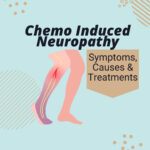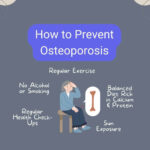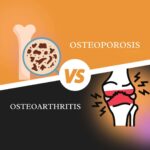Alzheimer’s disease is a brain disorder that affects memory, thinking, and behavior. This disease is the most common cause of dementia, a decline in cognitive abilities that interferes with daily life and affects millions of people worldwide.

Key Takeaways:
- Alzheimer’s disease is a progressive brain disorder that affects memory, thinking, and behavior. It starts with mild cognitive impairment and progresses to severe dementia.
- There is currently no cure, but there are treatments available to manage symptoms and improve quality of life for those affected.
Common Causes
Aging
One of the most significant risk factors for Alzheimer’s is age. The disease is most common in people over the age of 65, and the risk of developing Alzheimer’s doubles every five years after the age of 65. This is because as people age, their brains undergo changes that make them more susceptible to Alzheimer’s and other forms of dementia.
Genetics
While most cases of Alzheimer’s are not directly caused by genetics, there are certain genetic factors that can increase a person’s risk of developing the disease. For example, people who have a parent or sibling with Alzheimer’s are more likely to develop the disease themselves. Additionally, there are certain genes, such as the APOE gene, that are associated with an increased risk of Alzheimer’s.
Other Factors
In addition to age and genetics, there are other factors that may contribute to the development of Alzheimer’s. For example, researchers have found that lifestyle factors, such as diet, exercise, and social engagement, may play a role in the development of the disease. Additionally, head injuries and certain medical conditions, such as high blood pressure and diabetes, may increase a person’s risk of developing Alzheimer’s.
Stages of Alzheimer’s Disease
The disease develops slowly and gradually worsens over time. There are several stages of Alzheimer’s, each with its own set of symptoms and challenges.
Preclinical Alzheimer’s Disease
The preclinical stage is the earliest stage, where changes in the brain begin years before a person shows any signs of the disease. During this stage, a person may have no symptoms, but abnormal changes in the brain can be detected through imaging tests.
Early-Stage Dementia
The early stage of dementia is also known as mild cognitive impairment due to Alzheimer’s. At this stage, a person may experience frequent recent memory loss, particularly of recent conversations and events. They may ask repeated questions and have some problems expressing and understanding language. Coordination problems include having difficulty writing and using objects.
Mild Dementia
Mild dementia is the second stage of the disease. At this stage, a person may have difficulty performing everyday tasks, such as paying bills or managing finances. They may also have trouble remembering names and faces, and may get lost in familiar places. They may experience changes in mood and personality and may become withdrawn or apathetic.
Moderate Dementia
Moderate dementia is the third stage. At this stage, a person may need more help with daily activities, such as dressing, bathing, and grooming. They may have trouble recognizing family and friends, and may experience delusions or hallucinations. They may also have difficulty communicating and may become agitated or aggressive.
Severe Dementia
Severe dementia is the final stage. At this stage, a person may be unable to communicate and may be completely dependent on others for their care. They may have difficulty swallowing and may be susceptible to infections and other illnesses. In this late stage of the disease, a person may become bedridden and may require round-the-clock care.
Symptoms and Warning Signs
Here are some of the most common dementia symptoms and warning signs of Alzheimer’s disease:
- Memory Loss: One of the most common and first symptoms is memory loss. People with Alzheimer’s may forget important dates, events, and conversations, and they may rely on reminders and notes to remember things. This makes social interactions more difficult and can lead to isolation.
- Confusion: Alzheimer’s disease can cause confusion and disorientation. People with the disease may have trouble recognizing familiar places and faces, and they may get lost in familiar surroundings.
- Getting Lost: Patients may wander and get lost, especially in unfamiliar places. This can be dangerous and stressful for both the person with the disease and their caregivers.
- Personality and Behavior Changes: People with the disease may become irritable, anxious, or depressed, and they may withdraw from social activities.
- Language Problems: People with the disease may have trouble finding the right words, following conversations, and understanding written or spoken language.
- Judgment Problems: People with the disease may make poor decisions, such as giving away money to strangers or neglecting personal hygiene.
- Difficulty with Daily Activities: Over the course of the disease, people may have trouble performing everyday tasks, such as cooking, cleaning, and dressing themselves.
It is important to note that some of these signs and symptoms may also be caused by other conditions, and a thorough disease diagnosis by a healthcare professional is necessary to diagnose Alzheimer’s disease. If you or a loved one are experiencing any of these symptoms, it is important to seek medical attention promptly.
Risk Factors and Prevention
Alzheimer’s disease is a complex condition that affects the brain and can lead to a decline in cognitive function. While there is no known cure, there are several risk factors that can be modified to reduce the risk of developing the condition.
Risk Factors
Age is the most significant risk factor. The risk of developing the condition increases as a person gets older. Additionally, having a family history of Alzheimer’s disease can increase the risk of developing the condition.
Lifestyle factors such as physical activity, nutritious diet, alcohol consumption, and smoking can also contribute to the risk of developing the disease. Studies have shown that physical activity can help reduce the risk of developing Alzheimer’s. A nutritious diet that includes fruits, vegetables, whole grains, lean proteins, and healthy fats can also help reduce the risk of developing the condition. On the other hand, excessive alcohol consumption and smoking can increase the risk as well.
Prevention
While there is no known cure, there are several steps that can be taken to reduce the risk of developing the condition. The following are some prevention strategies:
- Regular exercise: Engaging in regular physical activity can help reduce the risk of developing Alzheimer’s disease. Aim for at least 30 minutes of moderate-intensity exercise most days of the week.
- Healthy diet: A nutritious diet that includes fruits, vegetables, whole grains, lean proteins, and healthy fats can help reduce the risk.
- Limit alcohol consumption: Excessive alcohol consumption can increase the risk of developing the disease. Limit alcohol consumption to moderate levels.
- Quit smoking: Smoking can increase the risk of Alzheimer’s. Quitting smoking can help reduce the risk of developing the condition.
- Manage chronic conditions: Chronic conditions such as diabetes, hypertension, and heart disease can increase the risk. Managing these conditions can help reduce the risk of developing the condition.
Brain Changes in Alzheimer’s
The disease is caused by changes in the brain, including the death of brain cells and the buildup of abnormal protein deposits. These changes can occur years before symptoms appear.
One of the first areas of the brain affected by Alzheimer’s is the entorhinal cortex, which plays a crucial role in memory and spatial navigation. As the disease progresses, the hippocampus, a region of the brain that helps form new memories, is also affected. These changes can lead to memory loss, confusion, and difficulty with spatial orientation.
In addition to these specific regions of the brain, Alzheimer’s also causes more widespread changes throughout the brain. The disease leads to the death of brain cells and the formation of abnormal protein deposits, including amyloid plaques and tau tangles. These deposits interfere with communication between brain cells and lead to further cell death.
As the disease progresses, the brain undergoes significant structural changes. The cortex, the outer layer of the brain responsible for higher-level thinking, shrinks, and the ventricles, the fluid-filled spaces in the brain, enlarge. These changes can be seen on brain imaging tests and are used to help diagnose Alzheimer’s disease.
Diagnosis of Alzheimer’s Disease
There is no single test that can diagnose Alzheimer’s disease. Instead, doctors use a combination of tests and assessments to rule out other possible causes of cognitive decline and to determine if the patient has Alzheimer’s disease or another type of dementia. These tests may include:
- Cognitive and neuropsychological tests: These tests assess memory, language, attention, problem-solving, and other cognitive abilities. They may also evaluate mood and behavior.
- Brain imaging tests: Magnetic resonance imaging (MRI) and positron emission tomography (PET) scans can help detect changes in the brain that are characteristic of Alzheimer’s disease.
- Laboratory tests: Blood and urine tests can help rule out other possible causes of cognitive decline, such as thyroid problems or vitamin deficiencies.
It is important to note that mild cognitive impairment (MCI) is a condition that can precede Alzheimer’s disease. MCI involves a decline in cognitive abilities that is greater than what is expected for a person’s age and education level, but it does not interfere significantly with daily activities. People with MCI may be at increased risk of developing Alzheimer’s disease, but not all people with MCI will develop dementia.
If a doctor suspects Alzheimer’s, they may refer the patient to a specialist, such as a neurologist or geriatric psychiatrist, for further evaluation. The specialist may conduct additional tests and assessments to confirm the diagnosis and develop a treatment plan.
Treatment and Management
Pharmacological treatments include cholinesterase inhibitors and memantine. Cholinesterase inhibitors, such as donepezil, rivastigmine, and galantamine, work by increasing the levels of a neurotransmitter called acetylcholine in the brain. This can help improve cognitive function, particularly in the early stages of the disease. Memantine, on the other hand, works by regulating the activity of another neurotransmitter, glutamate, which is involved in learning and memory.
In addition to pharmacological treatments, non-pharmacological interventions can also be helpful in managing symptoms of Alzheimer’s disease. These may include cognitive and behavioral therapies, as well as lifestyle interventions such as regular exercise and a healthy diet.
The U.S. Food and Drug Administration (FDA) has approved a few immunotherapies to treat early Alzheimer’s disease. Lecanemab, for example, targets the protein beta-amyloid to help reduce amyloid plaques, which are one of the hallmark brain changes in Alzheimer’s. However, it is important to note that these treatments are not a cure and may not work for everyone.
It is important for patients with Alzheimer’s disease to have regular check-ups with their healthcare provider to monitor their symptoms and adjust their treatment plan as needed. Caregivers and family members can also play an important role in managing the disease by providing emotional support and helping with activities of daily living.
Complications
Individuals with Alzheimer’s disease may experience a range of complications that can affect their overall health and well-being.
Physical Complications
Falls and Fractures
The risk of falls and fractures is higher due to a decline in balance, coordination, and muscle strength. Falls can result in serious injuries such as hip fractures, head injuries, and even death. Precautions to prevent falls, such as removing tripping hazards, installing grab bars in bathrooms and hallways can help reduce the risk of falls.
Bedsores
There is a higher risk of developing bedsores due to the inability to move or change positions independently. Bedsores are painful and can lead to serious infections if left untreated. It is essential to frequently change positions, use cushions or pillows to relieve pressure, and keep the skin clean and dry.
Poor Nutrition or Dehydration
Patients with Alzheimer’s disease may experience a decline in appetite, leading to poor nutrition and dehydration. A healthy and balanced diet and plenty of fluids to prevent dehydration are to be encouraged.
Constipation or Diarrhea
Patients may also experience constipation or diarrhea due to a lack of physical activity, poor nutrition, and dehydration. Regular exercise, a healthy and balanced diet, and provide plenty of fluids are important to prevent constipation or diarrhea.
Dental Problems
Dental problems can happen due to forgetfulness or difficulty with oral hygiene. Regular dental check-ups and assistance with daily oral hygiene routines is recommended.
Mental Complications
Depression & Anxiety
Depression and anxiety are common due to changes in the brain that affect mood and behavior. It is essential to recognize the signs of depression or anxiety and seek medical attention if necessary.
Delusions and Hallucinations
Some patients may experience delusions and hallucinations due to changes in the brain that affect perception and thinking. It is essential to recognize the signs of delusions and hallucinations and seek medical attention if necessary.
Flu
There is an increased risk of complications from the flu due to a weakened immune system. It is essential to get an annual flu shot to prevent the flu.
Research and Future Prospects
Alzheimer’s disease research suggests that the primary histopathologic lesions are the extracellular amyloid plaques and the intracellular Tau neurofibrillary tangles (NFTs) [1]. As such, many of the current research efforts are focused on developing drugs and therapies that can target these specific pathologies.
There are currently a number of clinical trials underway that are investigating new treatments for Alzheimer’s, including drugs that target beta-amyloid, tau, and inflammation [2].
One of the most promising areas of research is the development of biomarkers that can be used to detect Alzheimer’s disease in its earliest stages. Biomarkers are measurable indicators of a biological process or disease state, and they can be used to predict the onset of Alzheimer’s disease before symptoms appear. This could allow for earlier diagnosis and treatment, which could significantly improve outcomes for patients [3].
Looking to the future from scientists and other experts review, there are a number of exciting developments on the horizon. Researchers are exploring new drug targets and therapies, including immunotherapies that can target beta-amyloid and tau, as well as drugs that can target inflammation and other underlying causes of Alzheimer’s disease [4].
Frequently Asked Questions
What are the 7 signs of Alzheimer’s?
The seven signs of Alzheimer’s include 1. memory loss, 2. difficulty with problem-solving, 3. difficulty completing familiar tasks, 4. confusion with time and place, 5. trouble understanding visual images and spatial relationships, 6. new problems with words in speaking or writing, and 7. changes in mood or personality.
What is the difference between Alzheimer’s and dementia?
Dementia is a general term for the decline in mental ability that affects daily life. Alzheimer’s is a type of dementia that causes problems with memory, thinking, and behavior.
What is the main cause of Alzheimer’s?
The primary cause of Alzheimer’s is unknown, but scientists believe that a combination of several factors can contribute to its development. Risk factors for Alzheimer’s disease include age, genetics, head injuries, and lifestyle factors such as diet and exercise.
What are the 4 stages of Alzheimer?
The four stages of Alzheimer’s include mild cognitive impairment, early-stage Alzheimer’s, moderate-stage Alzheimer’s, and severe-stage Alzheimer’s.
What are the types of Alzheimer’s disease?
There are two types of Alzheimer’s disease: early-onset Alzheimer’s and late-onset Alzheimer’s. Early-onset Alzheimer’s is a rare form that affects people under the age of 65, while late-onset Alzheimer’s is the most common form and affects people over the age of 65.
What are some ways to prevent Alzheimer’s disease?
Some ways to prevent Alzheimer’s disease include staying physically active, eating a healthy diet, getting enough sleep, staying mentally active, managing stress, and avoiding smoking and excessive alcohol consumption.
When to see a medical professional?
If you or someone you know is experiencing memory loss or other symptoms of Alzheimer’s disease, it is important to see a medical professional for an evaluation and diagnosis. Early detection and treatment can help slow the progression of the disease and improve quality of life.
- Best Red Light Therapy Device 2024 for Pain Management – 16 October 2024
- How To Improve Gut Microbiome – 26 May 2024
- Chemo neuropathy treatment: What to do? – 19 May 2024





